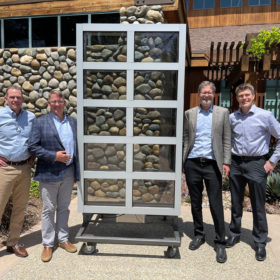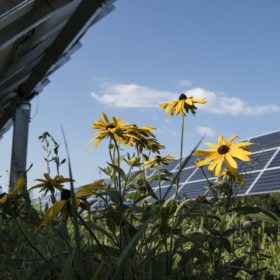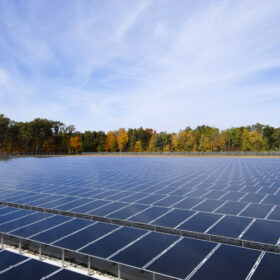Sunrise brief: National Solar Jobs Census finds that solar jobs increased 9% nationwide in 2021
Also on the rise: New home battery can provide backup power as well as smart time of use charging/discharging. Connecticut to allow distributed resources to compete with distribution grid upgrades. And more.
Solar jobs increased 9% nationwide in 2021
According to the National Solar Jobs Census 2020, employment in the solar industry looked favorable in 2021 compared to fossil fuel industries, but solar employers have some work to do on increasing diversity.
Researchers aim to scale organic semitransparent PV manufacturing for windows
A team at the University of Michigan developed a peel-off patterning technique to create stable semitransparent solar cells to be integrated with windows.
Watch: Huge solar wing unfurled prior to satellite launch
The 36-foot, five-panel solar wing will provide energy for the EarthCARE satellite mission.
Comparing performance of transparent solar windows to traditional windows
The results of the study by Wells Fargo Foundation and NREL initiative showed that PV-coated windows can appreciably lower the solar heat gain coefficient.
Sunrise brief: Manchin blocks climate bill, Biden said he will take executive action
Also on the rise: BLM approves 500 MW Oberon Solar Project on 2,700 acres in California desert. SOLV Energy, SEI partner to empower women in solar. And more.
Study confirms rule of thumb that PV inverters should run without faults for around 15 years
A new study by Bern University of Applied Sciences shows that the performance of most PV inverters and power optimizers remains optimal for up to 15 years. The inverters considered came mainly from the manufacturers Fronius, Sputnik, and SMA and most of the power optimizers examined came from Solaredge.
DOE invests $56 million in solar manufacturing and recycling
The initiatives will support recycling processes, manufacturing perovskite PV cells, boosting thin-film cadmium telluride module manufacturing, and creating easier and more effective pathways to commercialization.
Sunrise brief: Panasonic plans $4 billion US electric vehicle battery factory
Also on the rise: No resting on laurels, New York seeks to improve upon successful solar programs. Shipping costs remain key challenge for solar sector. And more.
Novel method to turn existing solar parks into agrivoltaic facilities
An international research team has developed a new methodology to increase levels of pollination at ground-mounted solar plants. It involves the development of new vegetated land cover below and around solar parks.













